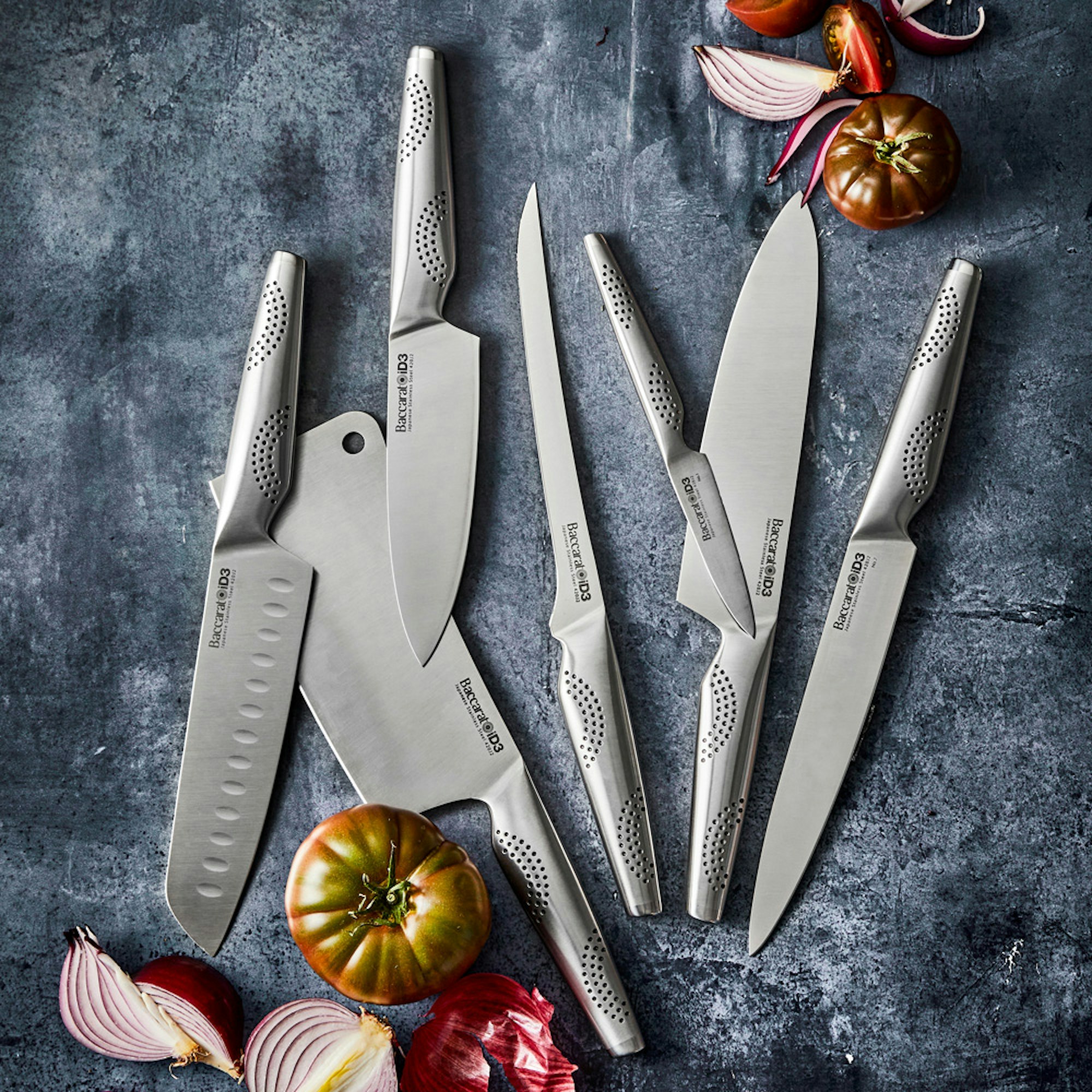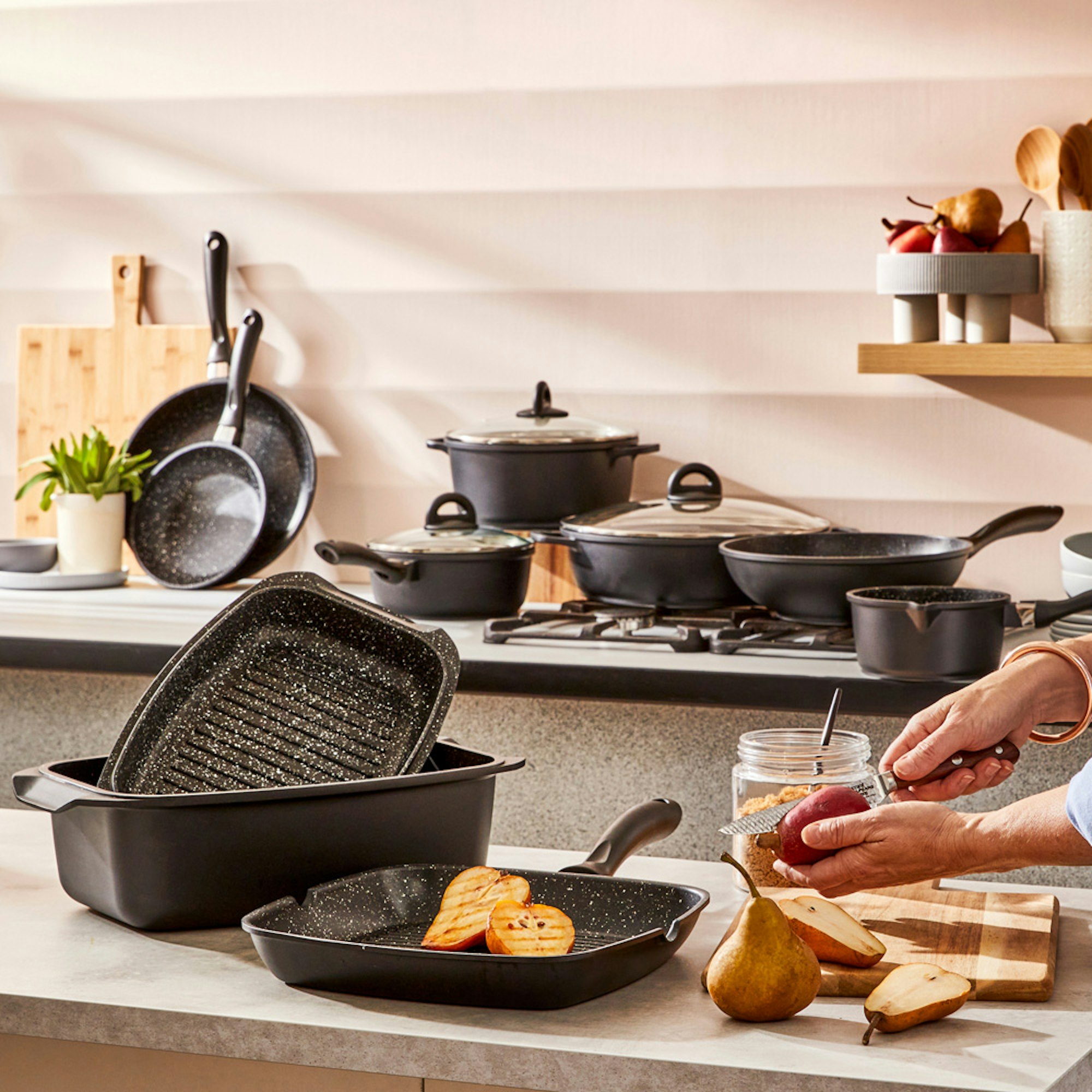How to Sharpen a Knife?
A sharp knife is essential in every kitchen. Whether you're slicing vegetables or carving meat, a well-sharpened blade ensures precision, safety, and longevity. If you've ever wondered how to sharpen a knife at home, this guide from House will walk you through the best techniques to keep your knives razor-sharp for every type of chopping, slicing and dicing required.

Why Sharpen Your Knives?
Over time, regular use dulls a knife’s edge, making it difficult to use, and in some cases, can even become dangerous. A sharp knife can make all the difference when you’re cooking.
Here’s why keeping your knives sharp is important:
● More Efficient Cuts: A sharp knife glides through food effortlessly, requiring less force.
● Stops the Blade from Slipping: A dull knife forces you to press harder, increasing the risk of slips and accidents.
● Increases Blade Longevity: Regular sharpening maintains the knife’s edge and prevents excessive wear and tear.
Sharpening vs. Honing: What’s the Difference?
Many people confuse sharpening with honing. While both are essential for knife maintenance, they serve different purposes:
● Honing (using honing steel or rod): This practice realigns the blade’s edge but doesn’t remove material. It helps maintain sharpness between sharpenings.
● Sharpening: Removes a small amount of metal from the blade, creating a new, sharper edge. This should be done when the knife becomes noticeably dull.

How to Use a Knife Sharpener?
There are three main ways to sharpen a knife: whetstones, manual sharpeners, and electric sharpeners. Each has its benefits, and the best method depends on your preference and skill level.
1. Whetstone (Sharpening Stone)
A whetstone is one of the most effective ways to sharpen a knife, though it requires a bit of practice.
How to sharpen a knife with a stone:
- Soak the whetstone in water for about 10-15 minutes (if using a water stone).
- Place it on a non-slip surface.
- Hold the knife at the correct sharpening angle (15-20 degrees for most kitchen knives).
- Run the blade across the stone in a sweeping motion, maintaining steady pressure.
- Repeat on both sides, ensuring even sharpening.
- Finish with a finer gritstone for a polished edge.
Whetstones at House:
To add precision sharpening to your repertoire of knife sharpening tools, try whetstones from brands like Global Knives or the Shun that offer simplistic sharpening with a professional edge.

2. Manual Knife Sharpener
A manual knife sharpener is a quick and easy tool for maintaining sharp edges. If you’re not familiar with the technique of using a whetstone, this method is ideal for all cooking levels.
How to Use a Knife Sharpener (Manual):
- Place the sharpener on a stable surface.
- Insert the knife blade into the appropriate slot (usually coarse for sharpening, fine for finishing).
- Pull the knife through the slot 3-5 times with gentle pressure.
- Rinse and dry the blade before use.
Manual Knife Sharpeners at House:
Find a huge selection of manual knife sharpeners from brands like Baccarat Iconix, Damashiro and Wolfgang Starke.

3. Electric Knife Sharpener
Electric knife sharpeners are convenient and ideal for beginners, taking the manual work out of the process.
How to Use an Electric Knife Sharpener:
- Turn on the sharpener and insert the blade into the first slot.
- Slowly pull the knife through, letting the machine do the work.
- Repeat in finer grit slots for a polished edge.
- Wipe the blade clean before using.
Electric Knife Sharpeners at House:
If you’re looking for an electric knife sharpener to regularly sharpen your kitchen knives, then discover a huge selection from brands like Baccarat to add even more efficiency to your routine.

What is the Best Method for Sharpening Knives?
The best method depends on your needs, skill level and available time:
● For precision sharpening: Use a whetstone to control your blade and the angle.
● For quick and easy sharpening: A manual sharpener is effective for sharpening on the go or as required.
● For effortless sharpening: An electric sharpener is ideal for sharpening a broad range of knives quickly.
Regular honing with honing steel between sharpening sessions helps maintain your knife’s edge for longer.

Knife Sharpening FAQs
1. How to Sharpen a Serrated Knife or Bread Knife?
Serrated knives require a different approach since each tooth needs sharpening individually:
- Use a sharpening rod or a specialised serrated knife sharpener.
- Match the angle of the serrations and gently file each groove.
- Remove any burrs by lightly running the smooth side of the blade against the rod.
2. What Angle Should You Sharpen a Knife?
● Western knives: 18-20 degrees per side.
● Japanese knives: 10-15 degrees per side.
● Serrated knives: Follow the factory angle (usually around 20 degrees).
3. How to Check If You Have a Single or Double Bevel Knife?
● Single-bevel knives are sharpened on one side only (common in Japanese knives).
● Double bevel knives have a symmetrical edge (common in Western knives).
To check, examine the blade’s edge; a single bevel will have a noticeable angle on one side, while a double bevel will have angles on both sides.
Explore the collection of high-quality knife sharpeners at House and master the art of keeping your knives razor-sharp now.
Back to blog






